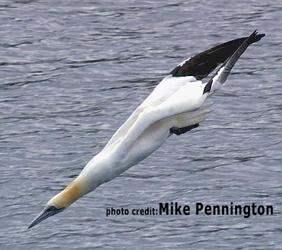The reasons for variation in group size among animal species remain poorly understood. Using ‘Ashmole's halo' hypothesis of food depletion around colonies, authors predict that foraging range imposes a ceiling on the maximum colony size of seabird species. This was tested with a phylogenetic comparative study of 43 species of seabirds (28 262 colonies), and investigated the interspecific correlation between colony size and foraging ranges. Foraging range showed weak relationships with the low percentiles of colony size of species, but the strength of the association increased for larger percentiles, peaking at the maximum colony sizes. To model constraints on the functional relationship between the focal traits, we applied a quantile regression based on maximum colony size. This showed that foraging range imposes a constraint to species' maximum colony sizes with a slope around 2. This second-order relationship is expected from the equation of the area of a circle. Thus, the large dataset and innovative statistical approach shows that foraging range imposes a ceiling on seabird colony sizes, providing strong support to the hypothesis that food availability is an important regulator of seabird populations. informacion[at]ebd.csic.es: Jovani et al (2015) Colony size and foraging range in seabirds. Oikos. DOI: 10.1111/oik.02781
http://onlinelibrary.wiley.com/doi/10.1111/oik.02781/abstract

 Las altas temperaturas están provocando que las lagunas y las marismas de Doñana pierdan agua rápidamente
Las altas temperaturas están provocando que las lagunas y las marismas de Doñana pierdan agua rápidamente




